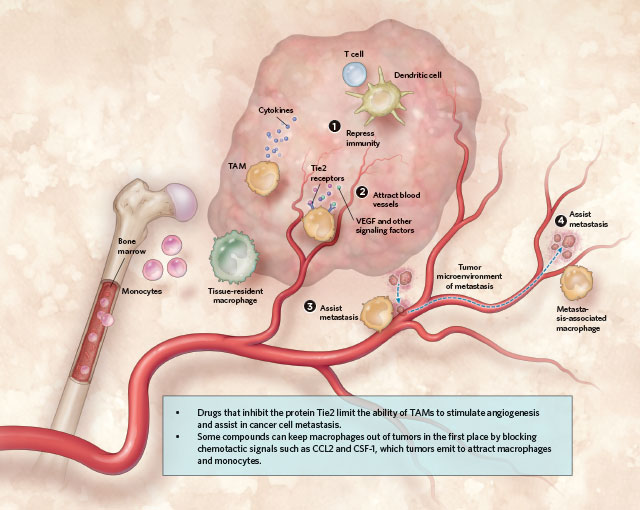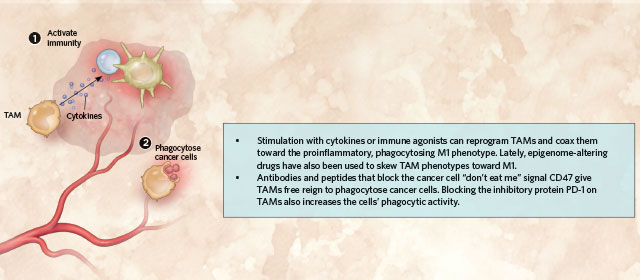T
umors use chemokine signals to draw monocytes and tissue-resident macrophages into the tumor microenvironment, where the cells become tumor-associated macrophages (TAMs). Once believed to be wholly supportive of cancerous growth, these cells also play important roles in protecting against disease.
Tumor-assisting macrophages: The M2 phenotype
TAMs can take on a variety of roles to support cancer cell survival and dissemination. Originating either from monocytes that come from bone marrow, or tissue-resident macrophages that arise during embryonic development, they can repress antitumor immunity by secreting cytokines such as IL-10, which blocks dendritic cell activation, and TGF-β, which blunts T-cell responses (1). A specific subset of TAMs that produce a protein called Tie2 can also stimulate angiogenesis through secretion of vascular endothelial growth factor (VEGF) and other molecules (2). At the same time, Tie2+ macrophages come together with cancer cells and blood vessel endothelial cells to form complexes, called tumor...
 © SCOTT LEIGHTON
© SCOTT LEIGHTON
Tumor-killing macrophages: The M1 phenotype
TAMs have the potential to aid antitumor immune responses by presenting cancer cell antigens to T cells and producing cytokines that activate dendritic cells and T cells (1). Macrophages are also experts at phagocytosing and degrading foreign cells, including cancer cells (2).
 © SCOTT LEIGHTON
© SCOTT LEIGHTONRead the full story.
Interested in reading more?




